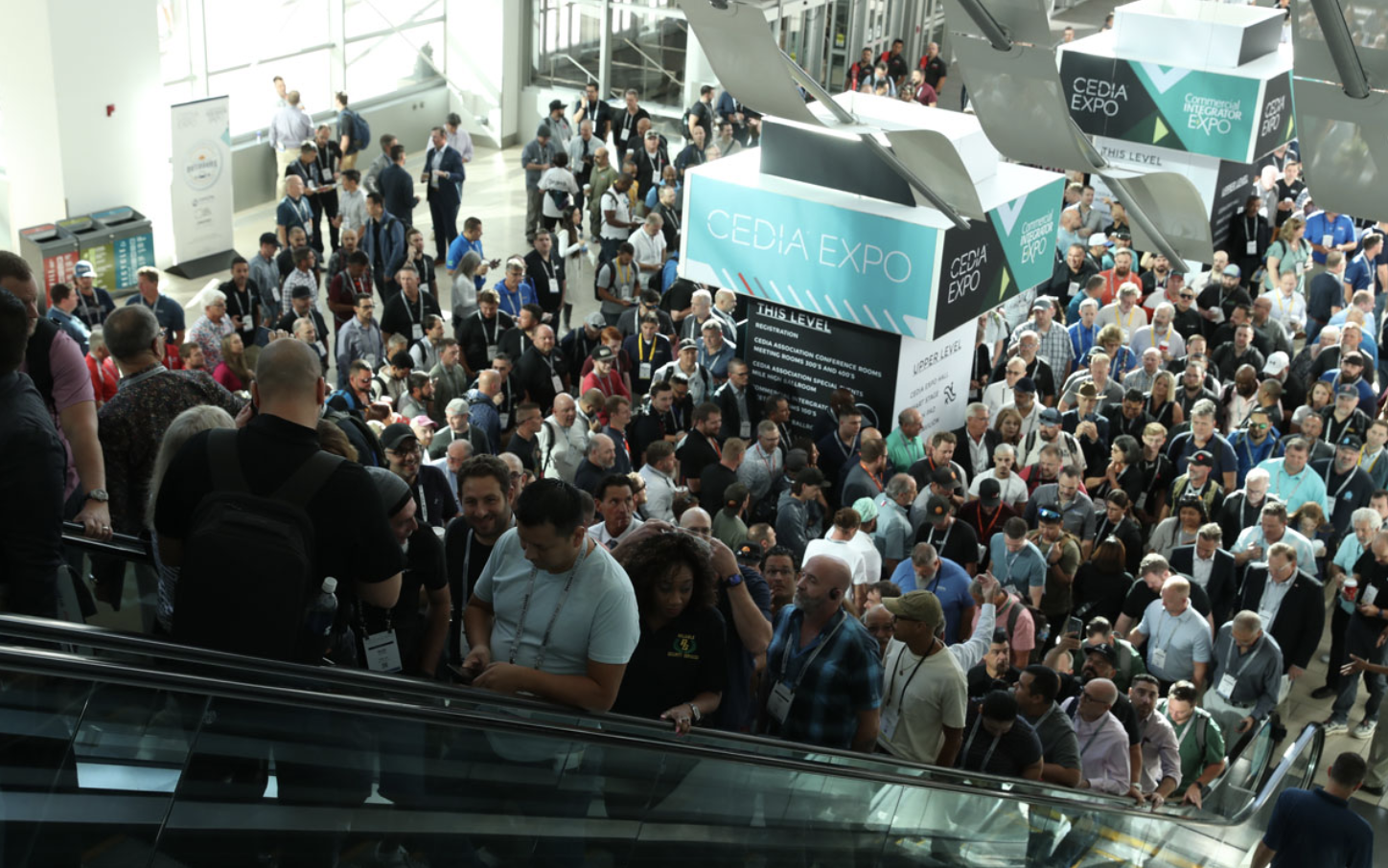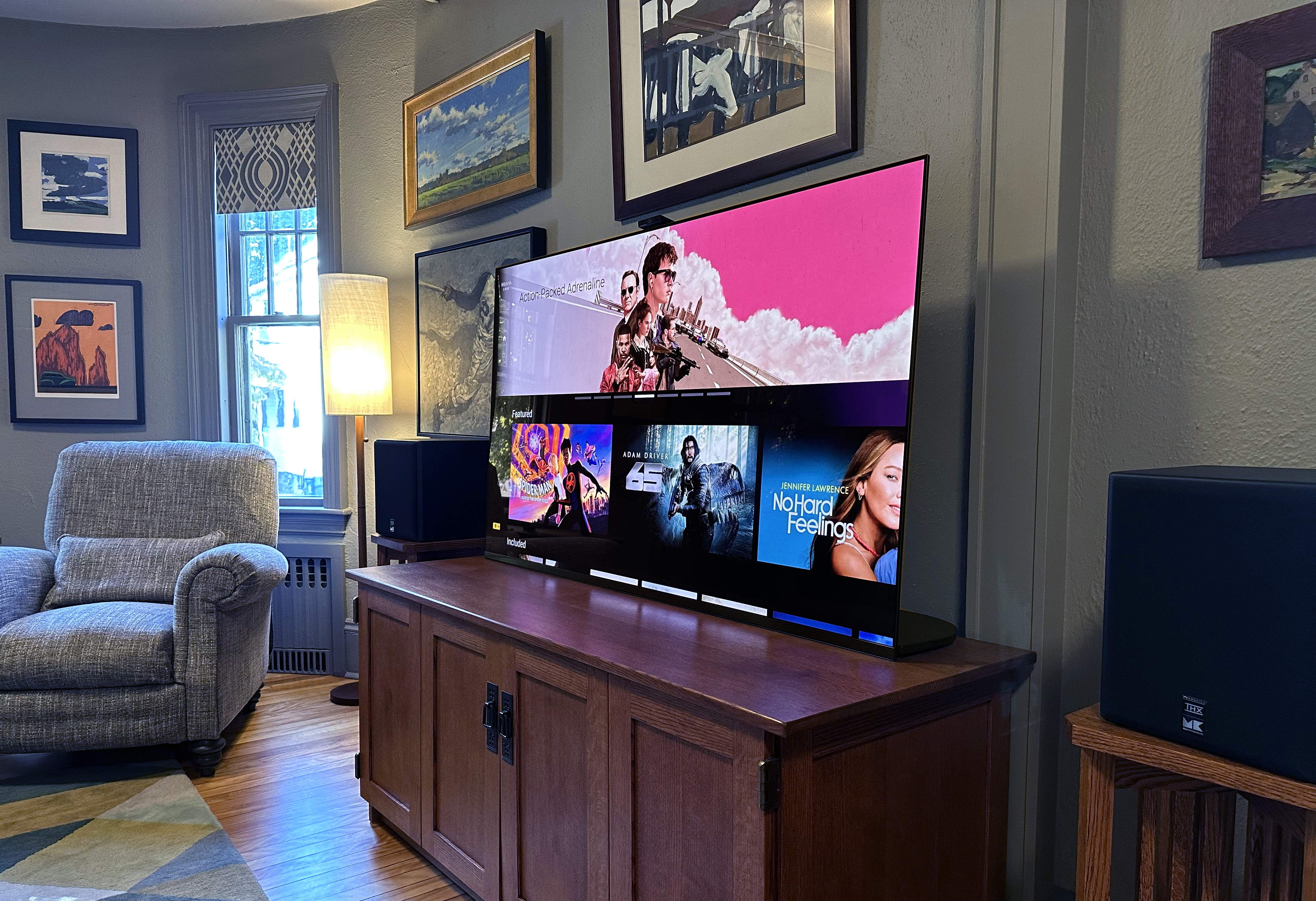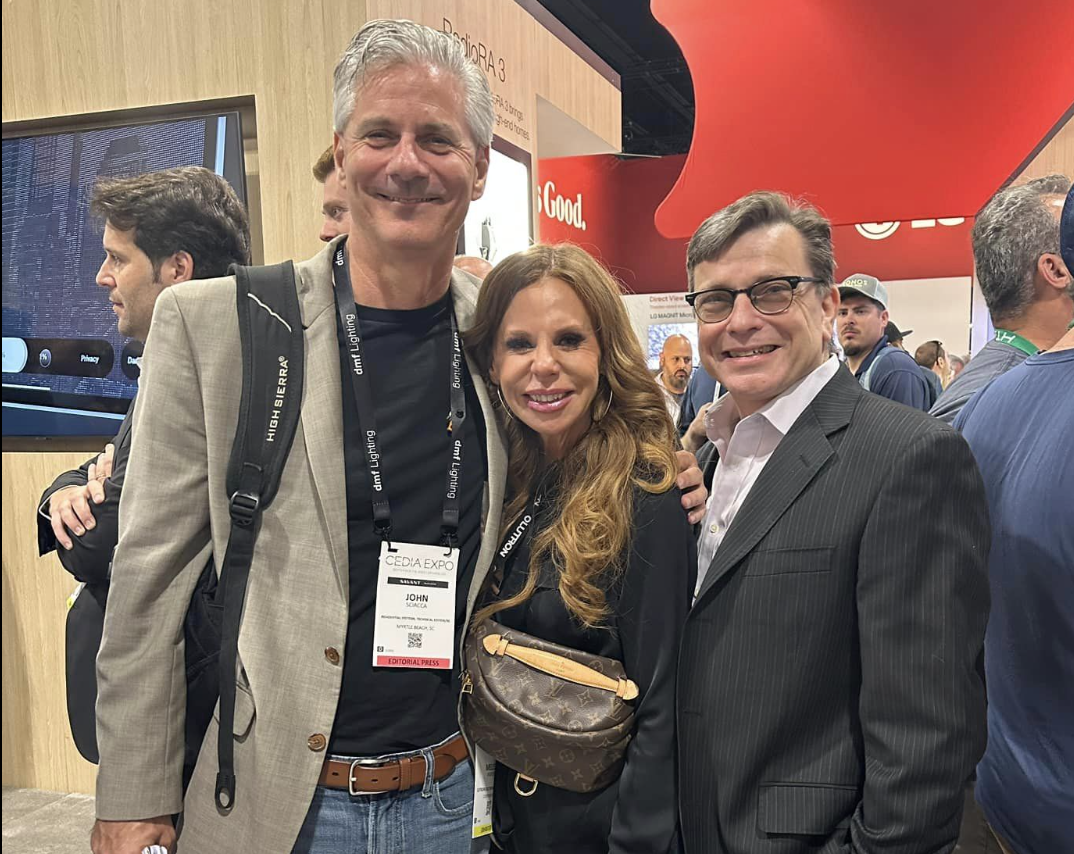Cindy's Coveted Products from CEDIA Expo 2023
AV Technology's Cindy Davis goes shopping for her home electronics at CEDIA Expo 2023.

My first CEDIA Expo was in 2000, held at the Indiana Convention Center. This show is one of my favorites. It is small by comparison to the gargantuan Consumer Electronics Show or InfoComm. CEDIA Expo is where residential custom installers (CI channel) go to learn about the latest and greatest home technology: audio, video, connectivity, and smart home solutions. In other words, it's where I go to covet and sometimes shop for what I'd like to have in my home. Some make it sooner rather than later!
My September schedule was such that I wasn't able to attend the CEDIA Expo this year, but as usual, I rely on updates from our sister publication, Residential Systems, which also produces the CEDIA Daily, its editor, Tony Savona, and my pal from my early consumer electronics days, John Sciacca.
Almost Infinite Displays
John is a residential custom installer and the person I call when considering a big home technology purchase. Based on John's hands-on review and recommendation, at the end of 2022, I purchased a Sony 65-inch A95K. Thanks to Sony's XR OLED Contrast Pro, its pure black contrast and massive pallet of colors, the depth and detail from the brightest colors to deep shadows and everything in between deliver a breathtaking image. My husband and I have enjoyed many viewing hours together. Every so often, in the middle of a movie, we find ourselves remarking on just how exceptional the image quality is.

Displays are my weakness; my overnight guests and family members benefit from my obsession. There are four outstanding TVs in my home for just two people. I own a combination of LG, Samsung, and Sony.
On my horizon, albeit a few years off, might be a microLED video wall. In his CEDIA Expo 2023 Highlights, Sciacca wrote, "These are the future of high-end, premium home cinema displays, and I saw examples from LG, Samsung, Sony, Planar, Digital Projection, Quantum Media Systems, C-SEED, Just Video Walls, Barco, and Stealth Acoustics. However, with retail prices of large direct-view LED screens dropping (the Sony 100-inch is now under $8000!), MicroLED has a way to go until it is a truly viable option."
Lighting Up
In August, I joined my friends from competitive publications and participated on the panel of judges for the Lutron Excellence Awards and got an embargoed preview of innovations that would be announced in September at CEDIA Expo. Lutron Electronics' chief corporate brand ambassador, Melissa Andresko, spearheaded and organized the awards beginning in 2003. Only missing a few years, I have been honored to be a judge since the inaugural year. It's here that I developed my passion for all things lighting.
Custom integrators submit projects for consideration in various lighting and shading categories. Yes, I am finally in the process of choosing wireless shading for two rooms in my home and hope to order them this year. Check out the list of this year's Lutron Excellence Award winners.
A daily selection of features, industry news, and analysis for AV/IT professionals. Sign up below.

Taking My Color Temperature
I've probably mentioned before that I have a background in graphic design and have taken color theory classes. As a designer, I have been tuned in to color temperature for as long as I can remember. Not only does the color gamut of my TVs matter, but the color temperature of the lighting in my home is even more critical.
It has been proven that the color temperature of your environment can affect your mood and sense of well-being. One of the technologies I have been particularly enamored with over the past few years is the ability to adapt the color temperature of environmental lighting based on many factors. For instance, the color temperature of the lighting in your bedroom when you're getting dressed to go out for the day shouldn't be the same temperature as the lights turned on when you wake up in the morning.
In 2018, Lutron purchased Ketra from three entrepreneurs who intended to change environmental lighting. Because I am a Lutron Excellence Awards judge, I've had the unique pleasure of seeing how Ketra transforms many installations. Check out this link to see how Ketra impacts the color temperature in different rooms.
Non-residential applications that use color temperature to help set the tone and sense of well-being in offices, classrooms, restaurants, and more have recently come to light, and I hope the trend continues.

Cindy Davis is the brand and content director of AV Technology (AVT). She was a critical member of the AVT editorial team when the title won the “Best Media Brand” laurel in the 2018 SIIA Jesse H. Neal Awards. Davis moderates several monthly AV/IT roundtables and enjoys facilitating and engaging in deeper conversations about the complex topics shaping the ever-evolving AV/IT industry. She explores the ethos of collaboration, hybrid workplaces, experiential spaces, and artificial intelligence to share with readers. Previously, she developed the TechDecisions brand of content sites for EH Publishing, named one of the “10 Great Business Media Websites” by B2B Media Business magazine. For more than 25 years, Davis has developed and delivered multiplatform content for AV/IT B2B and consumer electronics B2C publications, associations, and companies. A lifelong New Englander, Davis makes time for coastal hikes with her husband, Gary, and their Vizsla rescue, Dixie, sailing on one of Gloucester’s great schooners and sampling local IPAs. Connect with her on LinkedIn.
